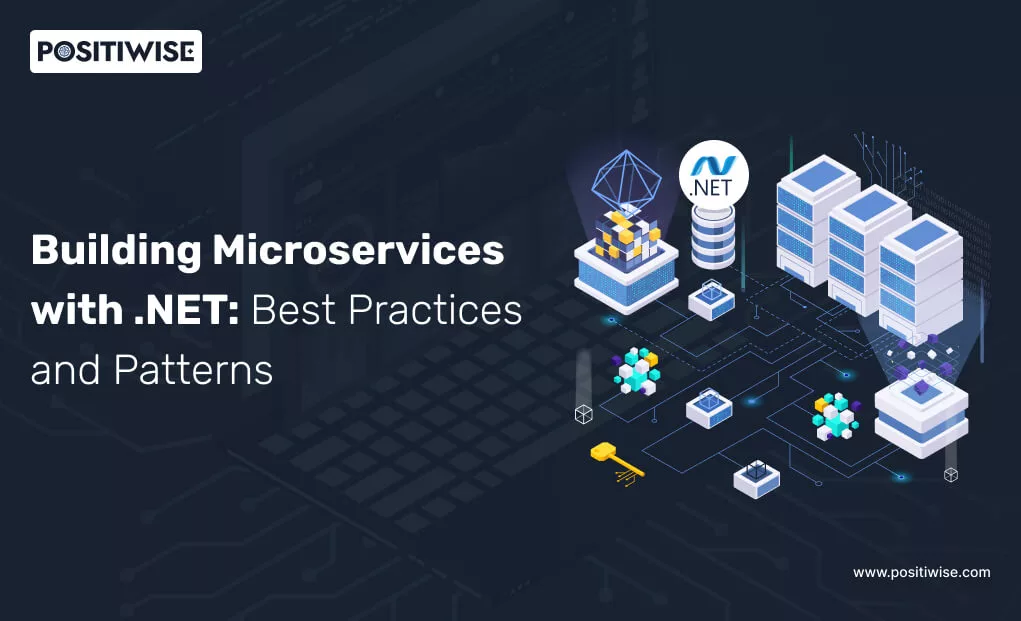Quick Overview:
The blog offers an insight into top .NET microservices best practices. It’ll help you choose the right microservices pattern, configure relevant databases, manage security, and have better observability. All the best practices leverage with an improvement of an essential software factor, such as scalability, performance, availability, and more. In addition, once you implement these practices, the real potential of microservices in .NET will be unlocked.
Building Microservices with .NET
Microservices is a well-known architecture that is utilized by every other firm to ensure application performance, scalability, flexibility, and availability. In addition, it also helps the firms to efficiently develop, manage and update their applications. However, to leverage all these benefits for a .NET application, you should know about the microservice best practices.
In addition, microservices with .NET require everything in sequence, and the best practices help you with that. So, let’s have a look at them for availing of a best-in-class .NET microservices application.
Most Preferred Microservices Best Practices From Experts
The following are the best microservice practices that .NET Developers should consider when creating a .NET microservices application.
1: Individualize Data Store For Every Microservices in .NET
If you want to manage your microservices with .NET in the most efficient way possible, then configure a different database for each of its services. Otherwise, the main purpose of using microservices will not be fulfilled. In addition, you have to ensure that databases are separated and can only communicate through APIs.
Moreover, if two services require the same database, then there should be a subset configured for such purposes. Once you do so, you will have better flexibility, minimized complexity, lesser dependency, and optimized cost.
2: Select the Right .NET Microservices Pattern
When you look for microservices, you’ll find four main patterns: decomposition, integration, database, and observability. You have to choose any of the models according to your requirements. It’s best to consult with a .NET development company. But, you should also have a brief about them.
Additionally, the decomposition pattern helps to break down and divide apps into sub-domains for better deployment and maintenance. Further, the integration pattern helps you orchestrate the operations and ingress the entire system. Following it, the database pattern primarily focuses on streamlining communication between two or more databases. And lastly, the observability pattern aids in finding and resolving the issues in a timely and cost-efficient manner.
3: Utilize Containerization Technology
In a microservices architecture, multiple services run simultaneously to offer each defined functionality. But, when it comes to managing them all, it can become a headache for the administrator. However, you can simplify this process by using containers.
When you use containerization, code for every component is stored and executed in an isolated environment. In addition, every container has its own runtime and operating system. Due to this, availability is maintained, and the entire .NET application runs perfectly.
4: Consistently Monitor, Log and Update
Every .NET and microservices professional in the industry recommends consistently monitoring the mechanism. It helps you have a better look at the overall functionality and improve it accordingly. In addition, .NET offers a built-in middleware known as Health Checks. It helps you seamlessly asses the application’s health.
In addition, you should also store the logs on a centralized server. It’ll help you to determine the root cause of every incident. You can refer to the logs anytime to view the changes made to the .NET microservices application. Also, you should update the microservices and .NET versions to have all the patches on to prevent illegitimate activities.
5: Configure Asynchronous Communication
To not let unavailability and service clash come your way, you should configure asynchronous communication between services. All the data processing should be connected well so that each required service receives an update simultaneously.
Further, to efficiently use asynchronous communication in microservices with .NET, your model should have the following implementations.
- A response should be provided to all requests.
- Notifications should be sent to sender and receiver.
- The service must be enabled to publicize a message.
- The services should be configured to send requests and responses to multiple recipients.
6: Prefer Using Single Responsibility Pattern
It’s advised by industry veterans that a single responsibility pattern should be applied from the very beginning. It aids you to focus on each significant service and the core components, including classes, methods, and functions. In addition, it makes the learning curve easy, enabling every team member to quickly complete assigned tasks.
Furthermore, SRP supports enhancing reusability, testability, and flexibility. All these factors leverage to save time, cost, and effort. Also, you get the benefit of combining independent .NET microservices and have better observability.
7: Align Work with DevSecOps Model
For data and user security purposes, professionals recommend the DevSecOps model for the .NET microservices application. It helps to prevent unauthorized access, potential threats, and also supports retaining data integrity and confidentiality.
Additionally, if any significant security issue occurs during the development, deployment, or maintenance phase, it helps to mitigate that as well. Further, it leads to ensuring that all microservices are running in a secure environment. As a result, you avail of better app quality, enhanced productivity, fewer errors, and lower maintenance efforts.
8: Build Stable and Robust API Gateway
For the efficient use of microservice in .NET applications, you need a reliable API design with backward compatibility. Microsoft dotnet enables you to build RESTful APIs within minimal time and effort, which you can use for your microservices architecture.
In addition, with backward compatibility, you will ensure seamless service availability with no breakdown. Moreover, the microservices architecture will run only on the server side, supporting the maintenance of application performance. Also, to achieve this, it’s recommended to use API versioning so that clients can work according to the required API version.
Concluding Up
To avail of all the benefits of microservices with .NET, you have to follow the best practices. They’ll help you improve the application performance, security, stability, and flexibility in almost every use case. In addition, if you cannot follow them all, you should implement API versioning, individual databases, alignment with DevSecOps, and use a single responsibility pattern. For the rest, you can consult with a .NET development company, and they can help you with the best consultation for your project.
Expert in Software & Web App Engineering
Parag Mehta, the CEO and Founder of Positiwise Software Pvt Ltd has extensive knowledge of the development niche. He is implementing custom strategies to craft highly-appealing and robust applications for its clients and supporting employees to grow and ace the tasks. He is a consistent learner and always provides the best-in-quality solutions, accelerating productivity.






